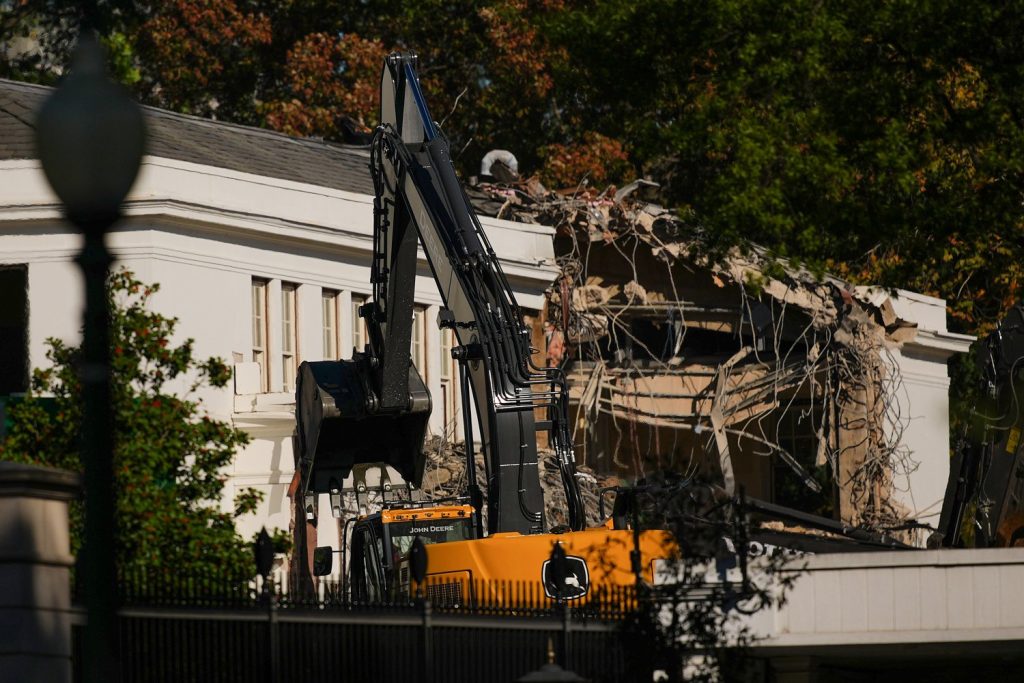The East Wing of the White House has been demolished to clear space for a proposed $300m gilded ballroom, only days after the administration confirmed the project would proceed.
The move has provoked widespread criticism from historians, preservationists and former officials, who accuse the government of disregarding legal and cultural safeguards.
Satellite images taken on Friday revealed the eastern section of the historic building reduced to rubble. The demolition represents a sharp reversal of President Donald Trump’s earlier pledge, made in July, that no part of the White House’s existing structure would be removed during the ballroom’s construction.
Despite the scale of the project, the administration pressed ahead without first submitting plans to the National Capital Planning Commission (NCPC), the federal body responsible for overseeing the construction and renovation of government buildings in the Washington region.
On Thursday, a White House official told Reuters that construction plans will soon be submitted. Another official told the Guardian that the NCPC “does not require permits for demolition, only for vertical construction. Permits will be submitted to the NPC at the appropriate time.”
That interpretation has been challenged. Earlier this week, the National Trust for Historic Preservation, a non‑profit organisation established by Congress, wrote to the White House insisting that the demolition plans are “legally required” to undergo public review. The Trust argued that bypassing such scrutiny undermines federal law designed to protect national landmarks.
Legal action has already begun. On Thursday, a Virginia couple, Charles and Judith Voorhees, filed a motion in Washington federal court seeking a temporary restraining order on the project. Their filing claimed that the demolition was proceeding “without legally required approvals or reviews”.
The motion stated: “Defendants are unilaterally decoupling the demolition of the East Wing of the White House from the construction approval process to expedite the project, effectively bypassing the historic preservation and planning reviews required under federal law for a project of this magnitude on a protected national landmark.”
The controversy has been heightened by the involvement of major corporate donors. Companies including Apple, Amazon, Meta, Microsoft and Google are reported to have contributed to the ballroom project. Defence contractors and communications firms such as Lockheed Martin, Palantir, T‑Mobile and Comcast have also pledged support.
President Trump has promoted the 90,000 sq ft ballroom as a privately funded venture. “It is being paid for 100% by me and some friends of mine,” he said, emphasising that no taxpayer money would be used.
Nevertheless, the demolition has sparked outrage among historians and preservationists, who argue that the East Wing is an integral part of the White House’s architectural and cultural heritage. Critics say the administration’s decision to proceed without full regulatory approval sets a troubling precedent for the treatment of protected landmarks.
The East Wing, constructed in 1942, has long served as the working space for the First Lady and her staff, as well as housing the White House Social Office and the visitors’ entrance. Its destruction removes a significant element of the building’s historic fabric.
Opponents of the project have also questioned the necessity of such a large ballroom, noting that the White House already contains several spaces suitable for official functions. The scale and opulence of the proposed new hall, they argue, risk overshadowing the building’s symbolic role as the seat of the presidency.
The administration has defended the project as a means of modernising the White House and creating a venue capable of hosting large‑scale state events. Supporters claim the ballroom will enhance the building’s functionality and provide a lasting legacy.
For now, the demolition has left a gaping void on the eastern side of the White House complex. Whether the construction of the ballroom proceeds without interruption will depend on the outcome of legal challenges and the response of federal oversight bodies.



